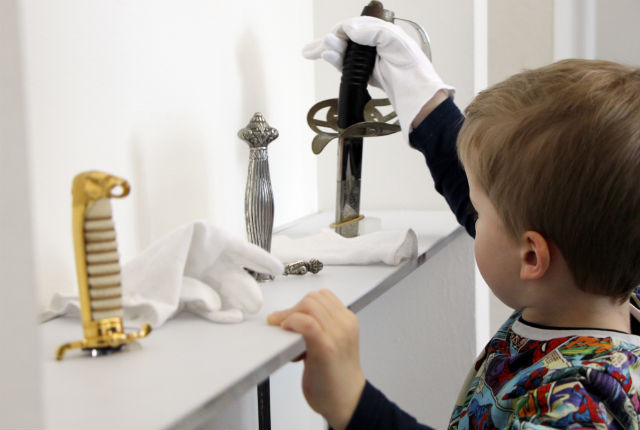
{Germany} The Cutting Edge of Museums. Literally.
Happy Museum Monday everyone! This week, I have another curiosity from our travels around the world’s museums to share with you – the <Deutsches Klingenmuseum> which literally translates as the German Blade Museum.
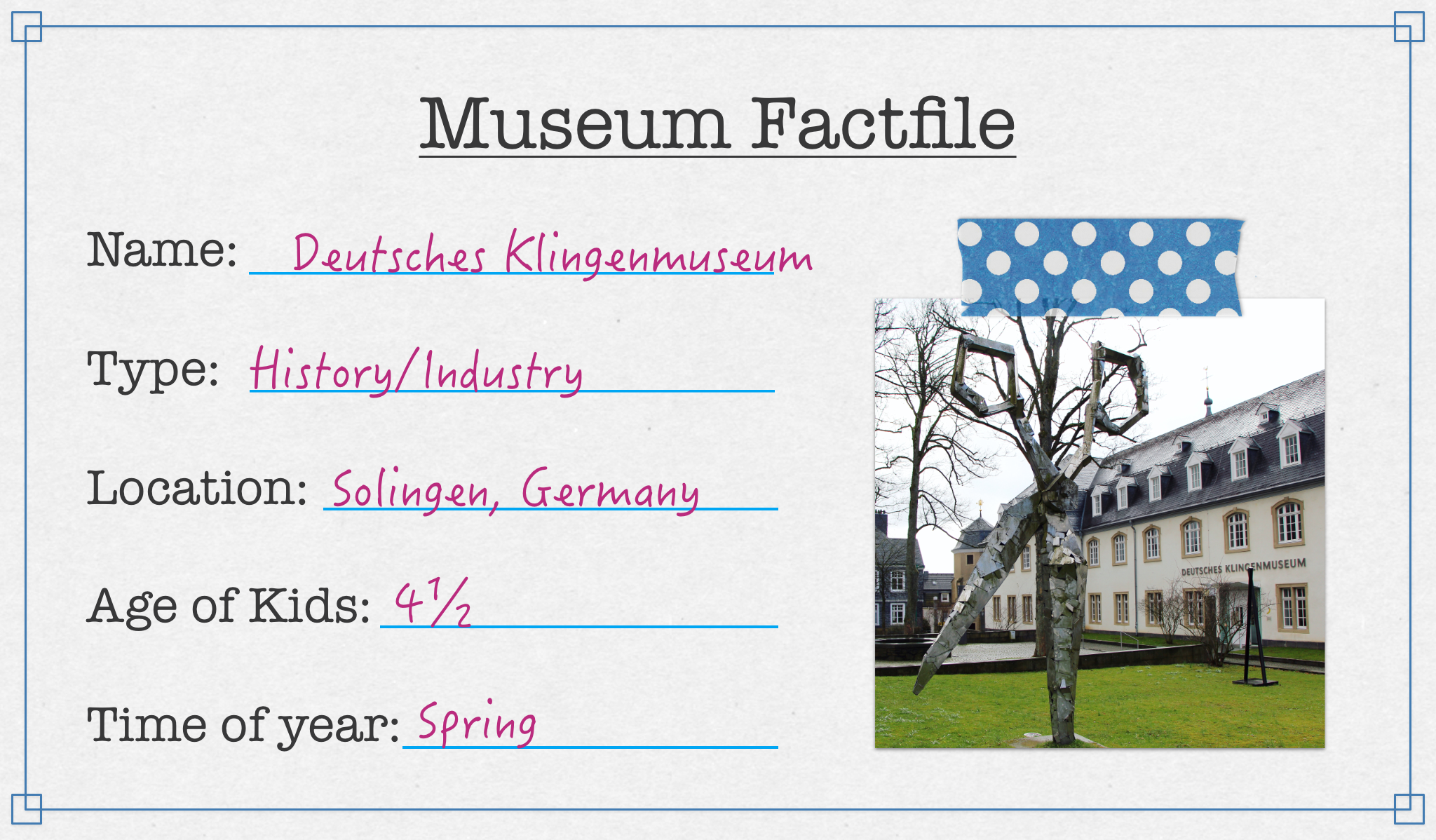
The Blade Museum is located in Solingen, famous as the ‘town of blades’ for hundreds of years, with blades for swords and rapiers to everyday knives and cutlery being exported to all corners of the world. Today, the importance of the industry has declined, but Solingen still enjoys its good name and reputation. It makes perfect sense to have the museum here, and it’s not easily missed, thanks to the gigantic pair of scissors on its front lawn!
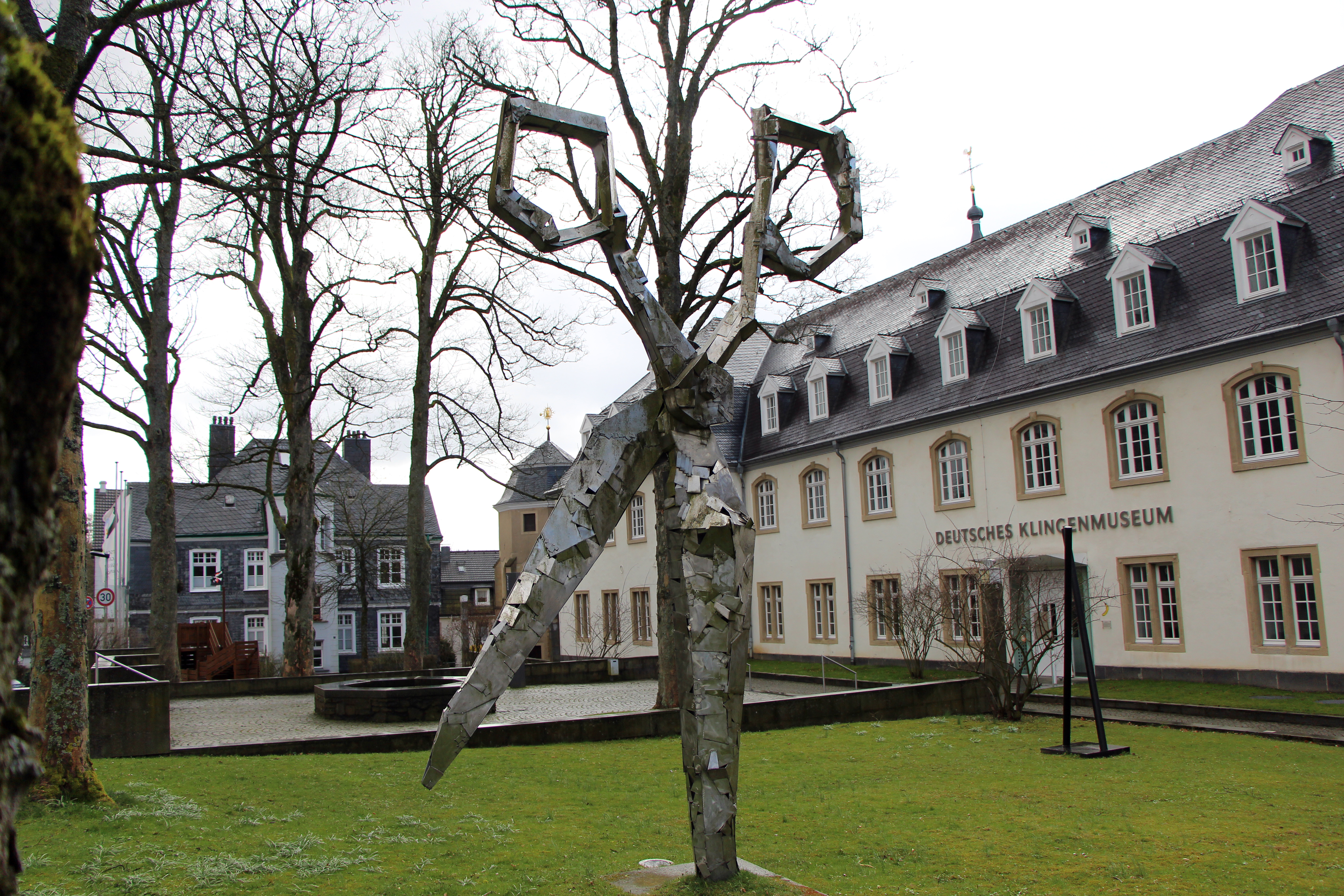
As to be expected, the museum covers the history of blades and cutting implements, from the time first blades were produced in the Bronze Age, right up to stylised designer cutlery of the 21st century, and the museum’s cutlery collection is apparently the biggest of its kind world wide. The exhibits in the museum are presented chronologically, from the Bronze Age right up to the 21st century. Throughout the displays, the different ways of using edged weapons, knives and cutlery are explained. At first glance, it may seem like there is a lot of repetition and ‘sameness’ in this museum – endless cases full of swords and knives, for example – but the fascination is in the nuances. How the blades evolved, their ornate decorations, the stories behind them. This really is a museum where you need to look closely to get the most out of it.
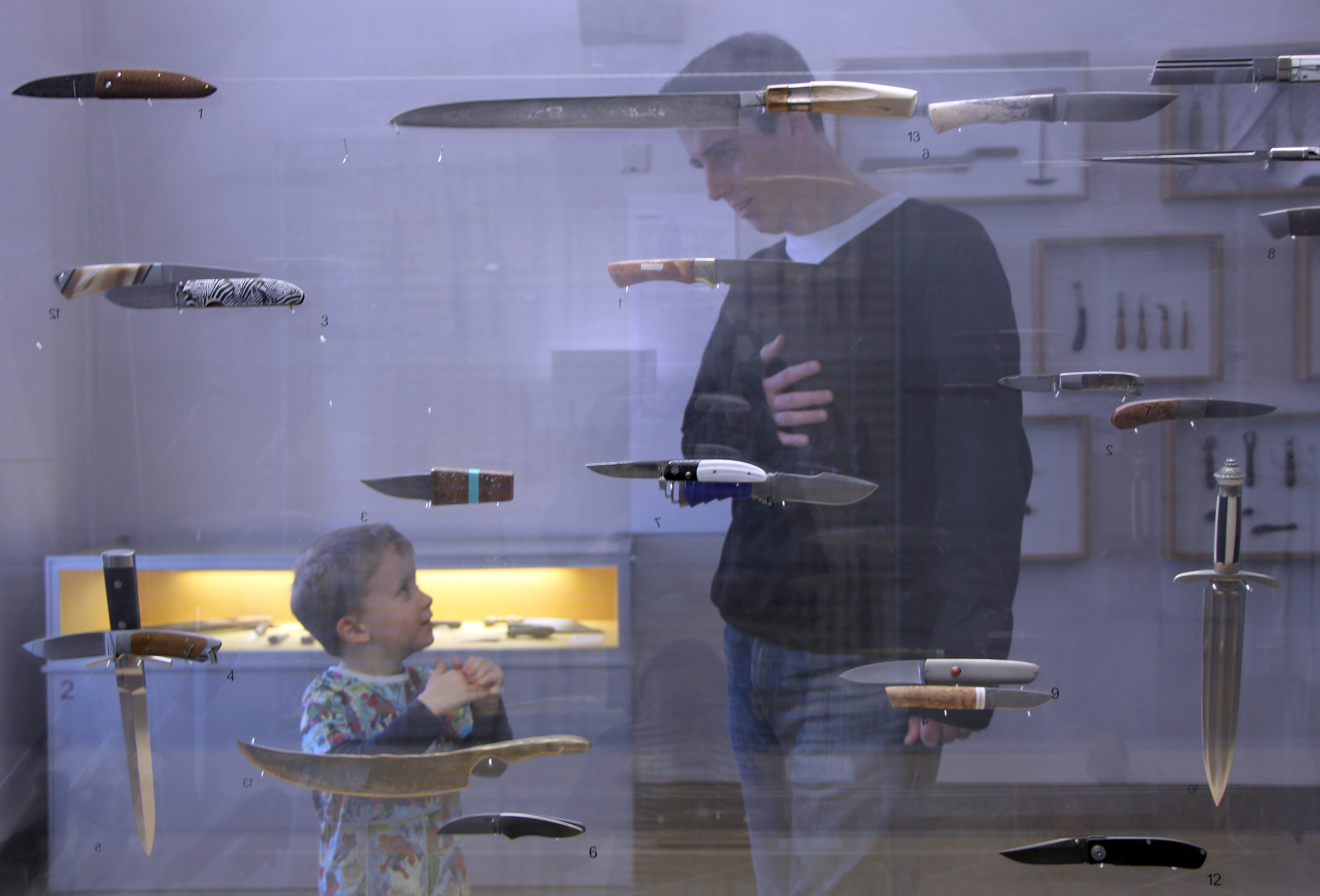
Given the cutting edge topic (sorry, couldn’t resist the pun) there’s not much scope for hands-on activities, though there was a short film showing how blades are made, which my then 4.5 year old watched in fascination, and an exhibit where you could lift different swords by the handle and feel how heavy they are.
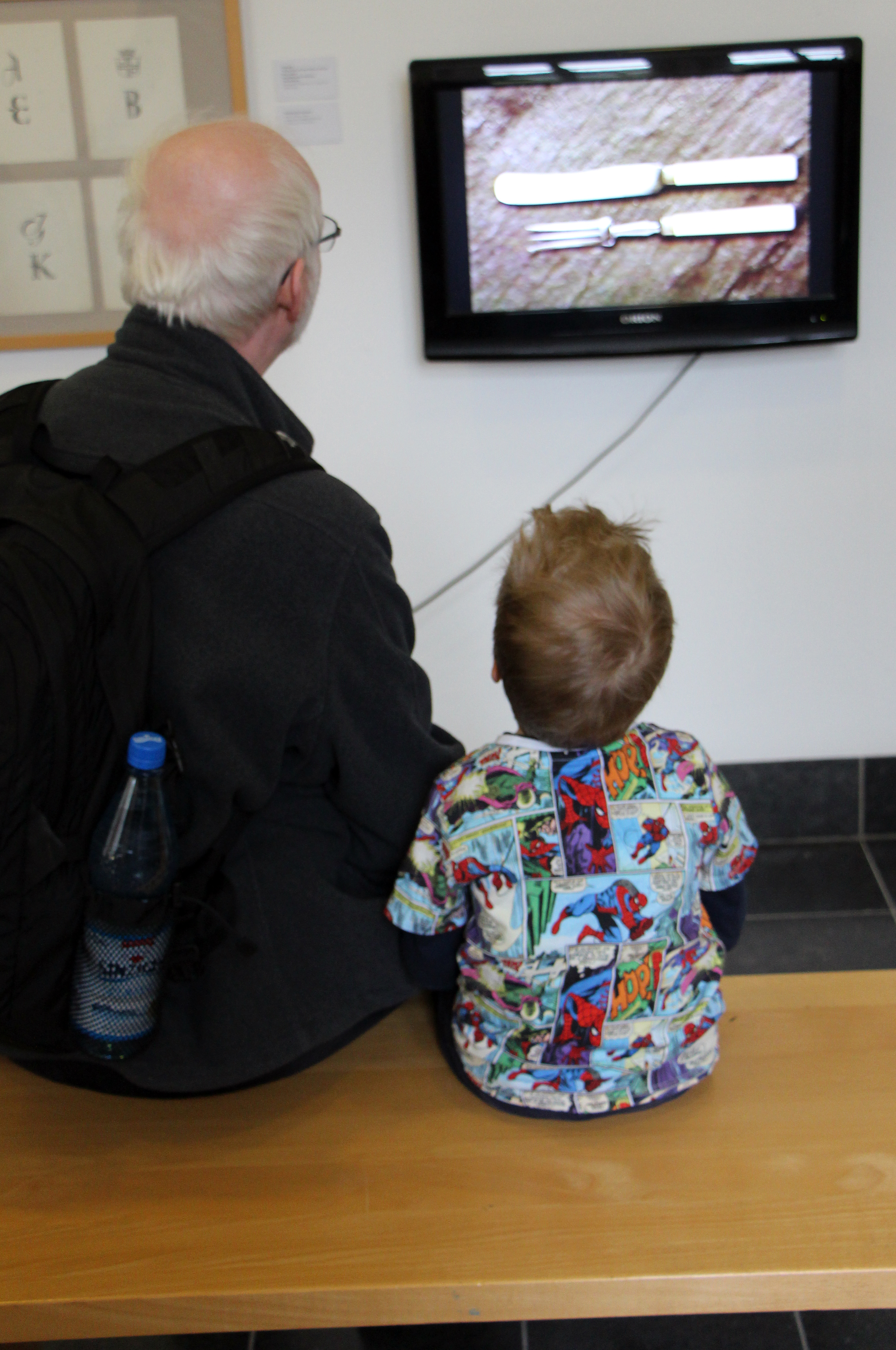
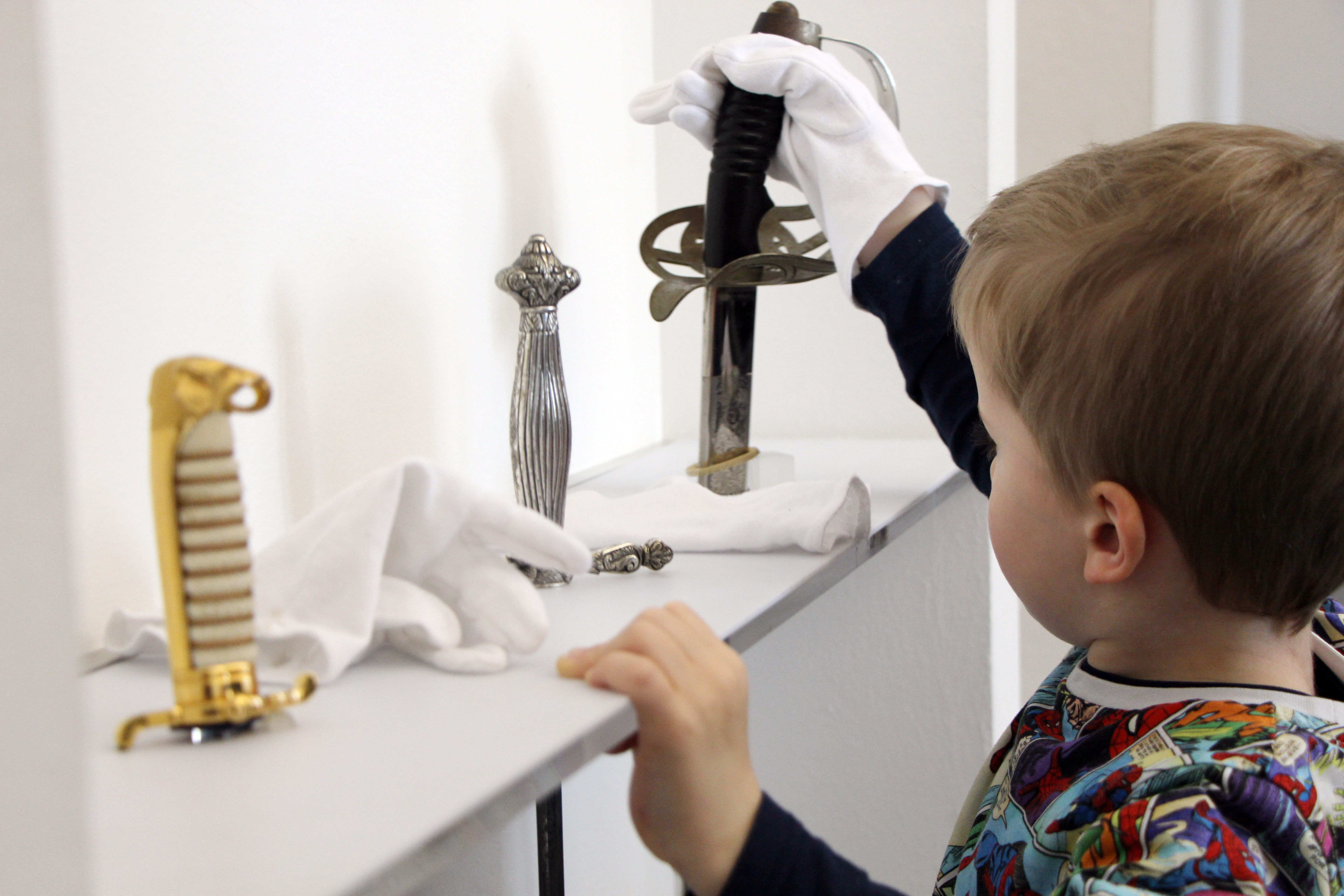
Lots of looking, not much touching – why am I recommending this museum for a visit with kids? Well, next to the main building, is a smaller building called the <Klingenmuseum für Kinder> which houses a gallery just for children. It’s fairly small, but there was lots to do.
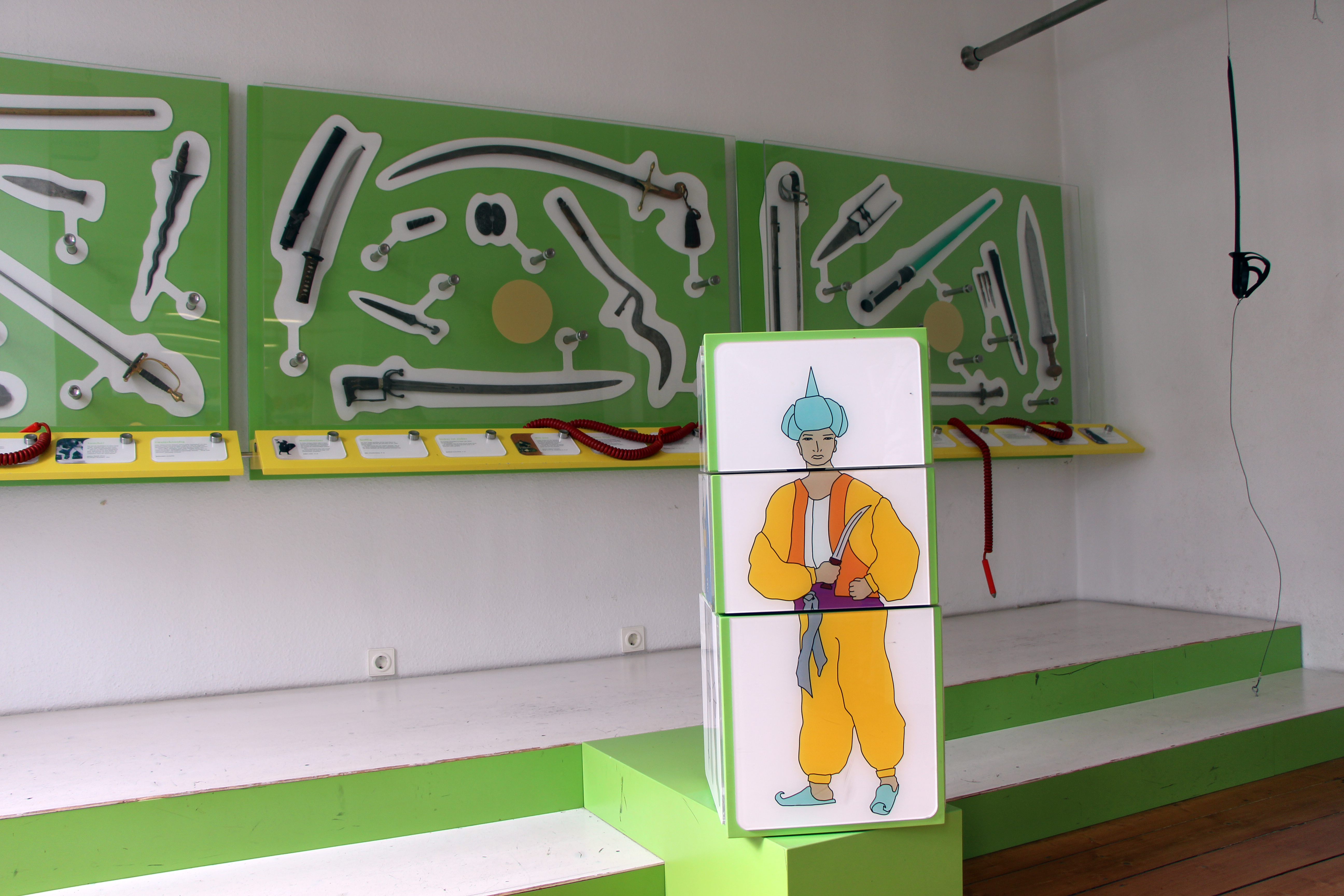
When you come in, there are two open plan rooms with lots of hands-on activities, all focusing on various different kinds of blades and how they are used. My boy was immediately drawn to the giant puzzle blocks, which featured four characters – such as a knight and a pirate – using different kinds of blades. Those four blades – I’m not sure if they were real versions that had been made blunt or just replicas – were anchored between the floor and ceiling, which children could stand behind and hold.
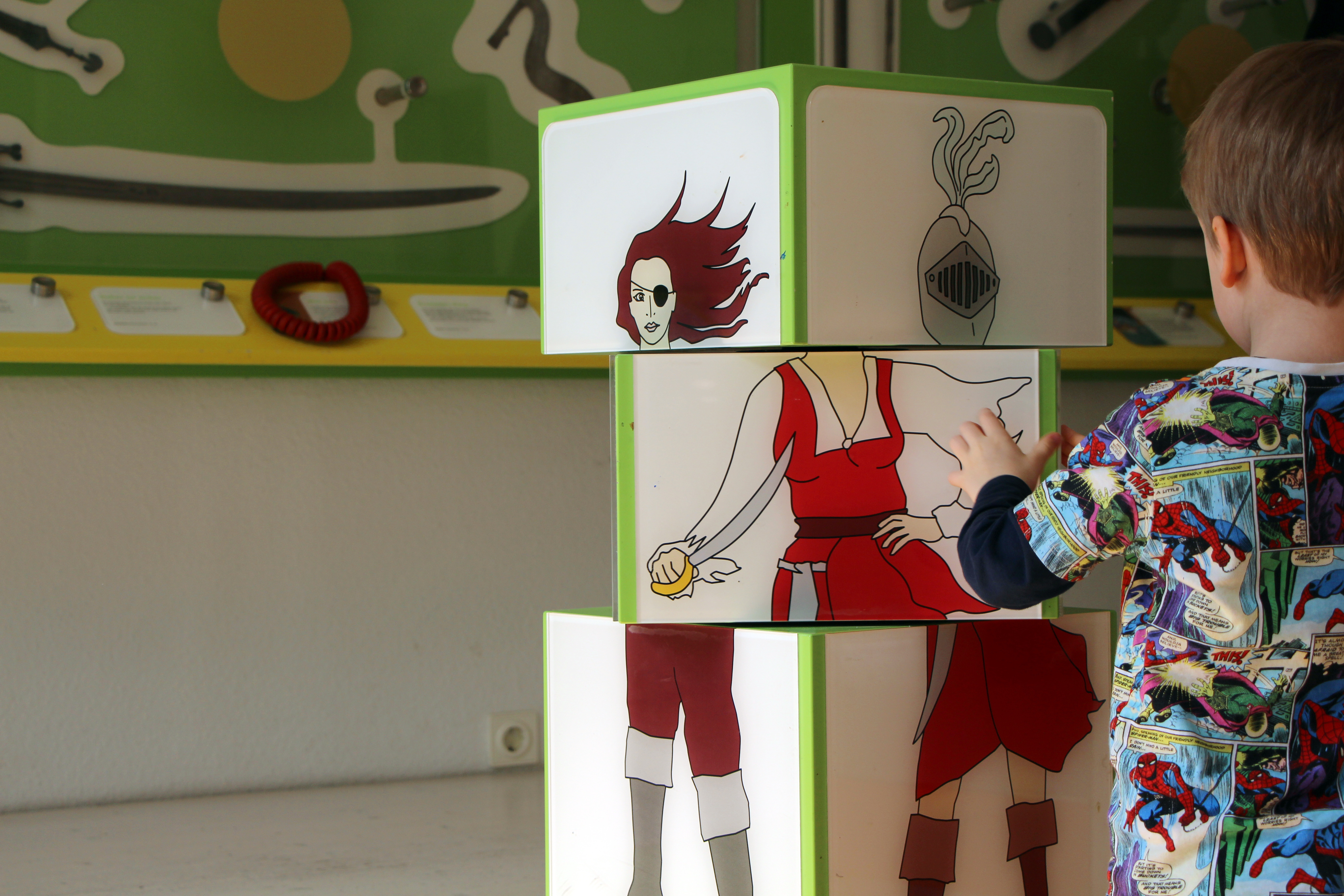
Behind the puzzle blocks was a large case displaying lots of different blades. There were two rods that you used to connect each blade to a description, and if you connected them correctly, the light in the middle would come up. Some team work was required for this, with daddy reading out the descriptions and matching the blades that my boy couldn’t reach.
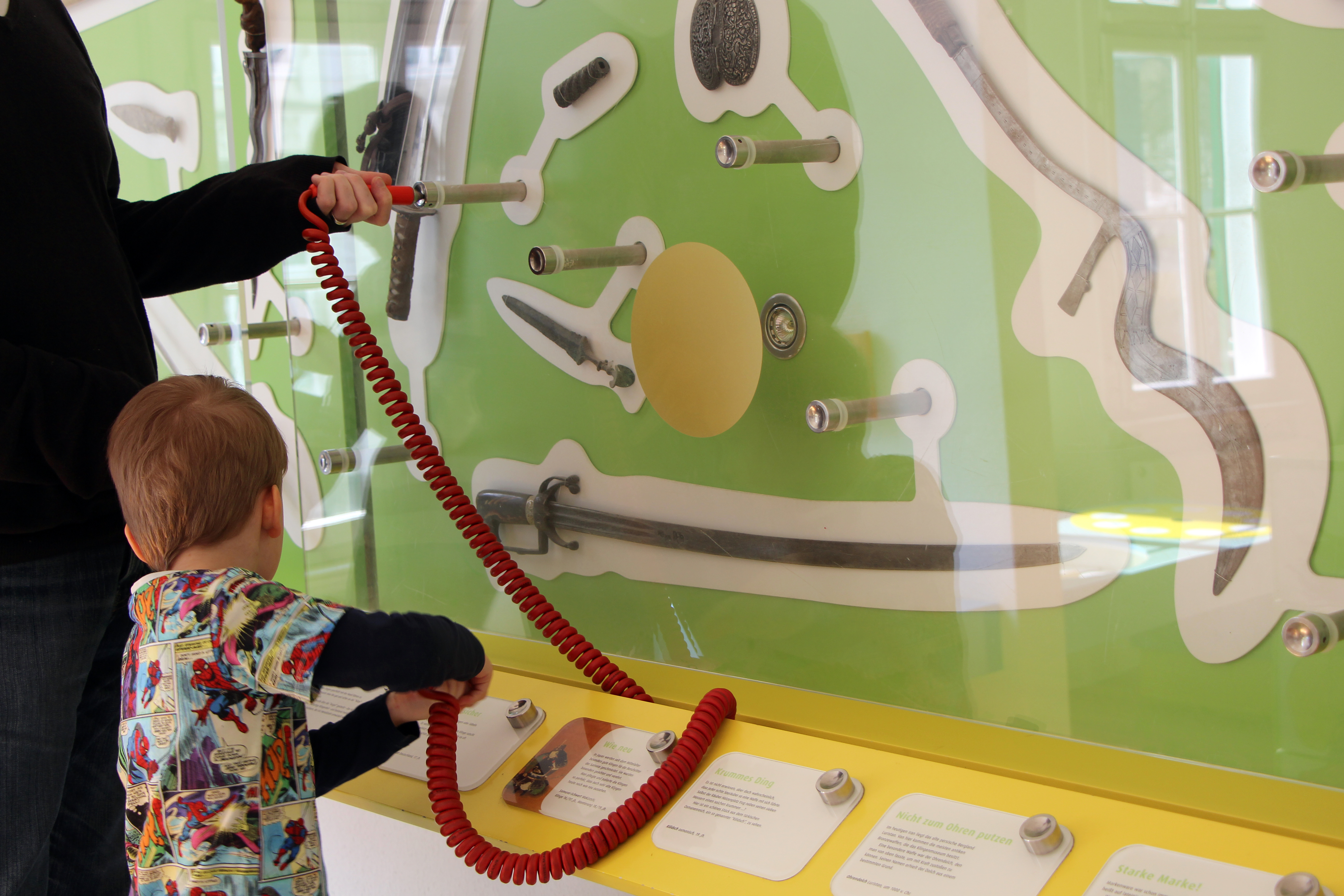
In the room next door, there was a series of feely boxes fixed along the wall. Each featured a kind of blade in a case above, and you had to feel the clues inside and guess what the different kinds of scissors and tools were used to cut, e.g. hair or flowers.
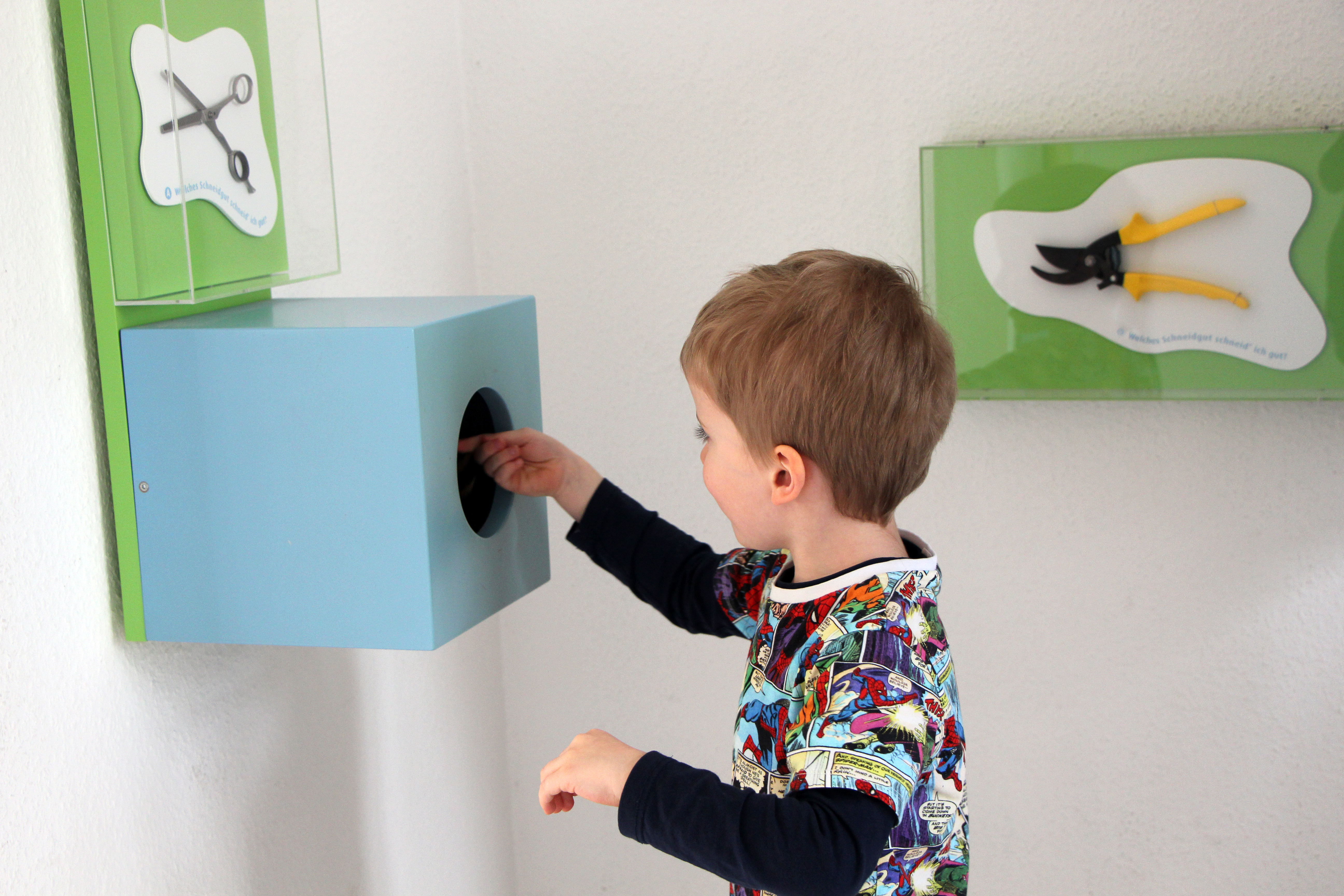
The feely box for the nail scissors contained a hand – not a real one, of course – with a finger missing – we had to assure my boy that the scissors were meant for cutting nails, not fingers! (which explains the expression on his face below)
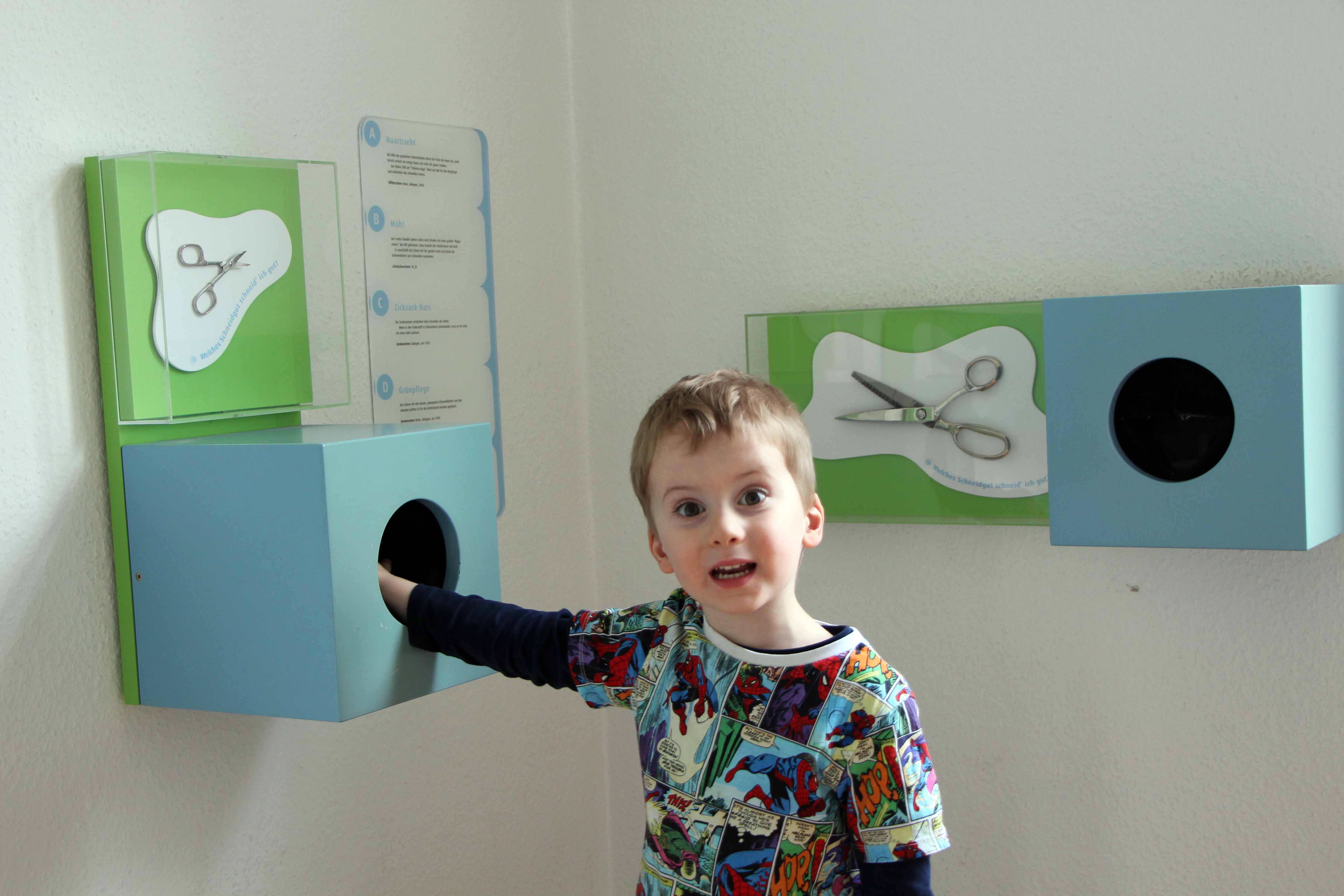
Next to the feely boxes, there was also row of audio guessing stations – when you pressed the buttons, each station would play a different sound of a blade in action and you had to try and guess what it was. Afterwards, you could slide up the panel to look under the question mark and see if you were right. It was actually quite tricky identifying the different sounds, but our boy loved it and spent quite some time listening to them over and over.
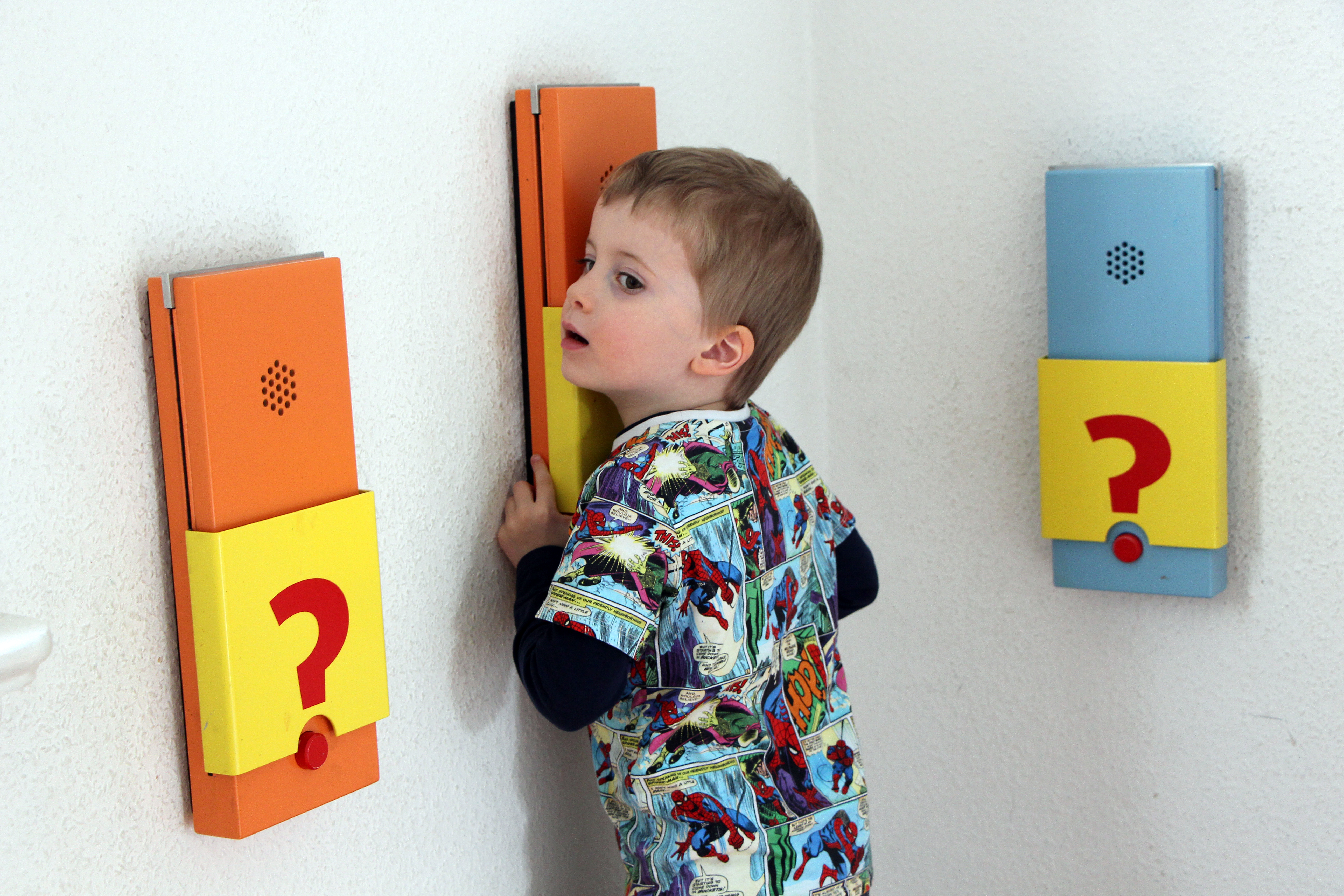
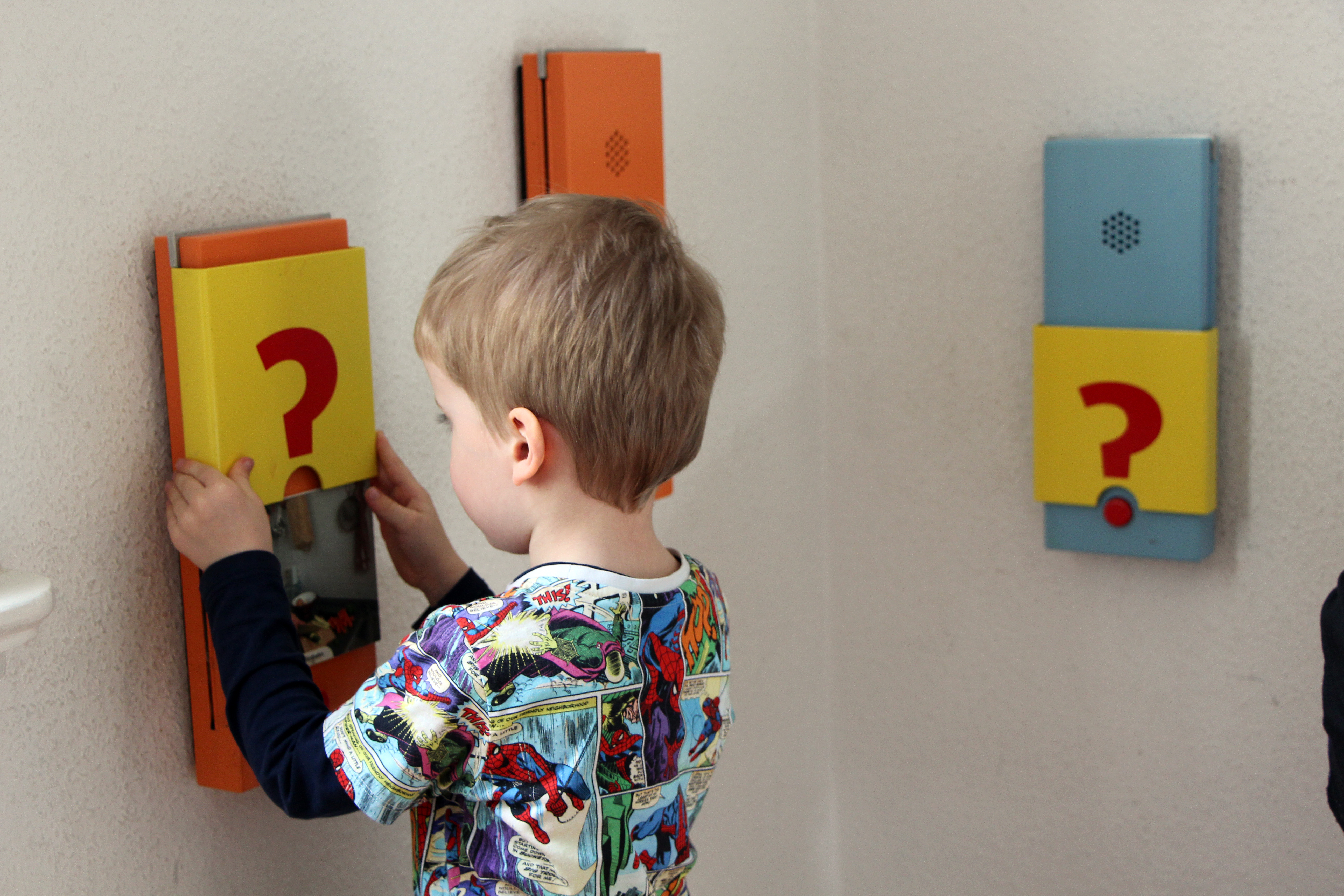
One activity I though was quite clever, involved a readjustable magnet. Not sure why the little gnome, but he sat in the middle of a circle with descriptions of various blades round the edge. You turned him around until his sword pointed to the blade you wanted to find, then moved him to sit in the middle of the display case (see above) next to the descriptions, and he would swing round until his sword pointed to the matching blade. Again, some team work was required with a grown-up reading the descriptions and our boy guessing where the gnome was going to point his sword.
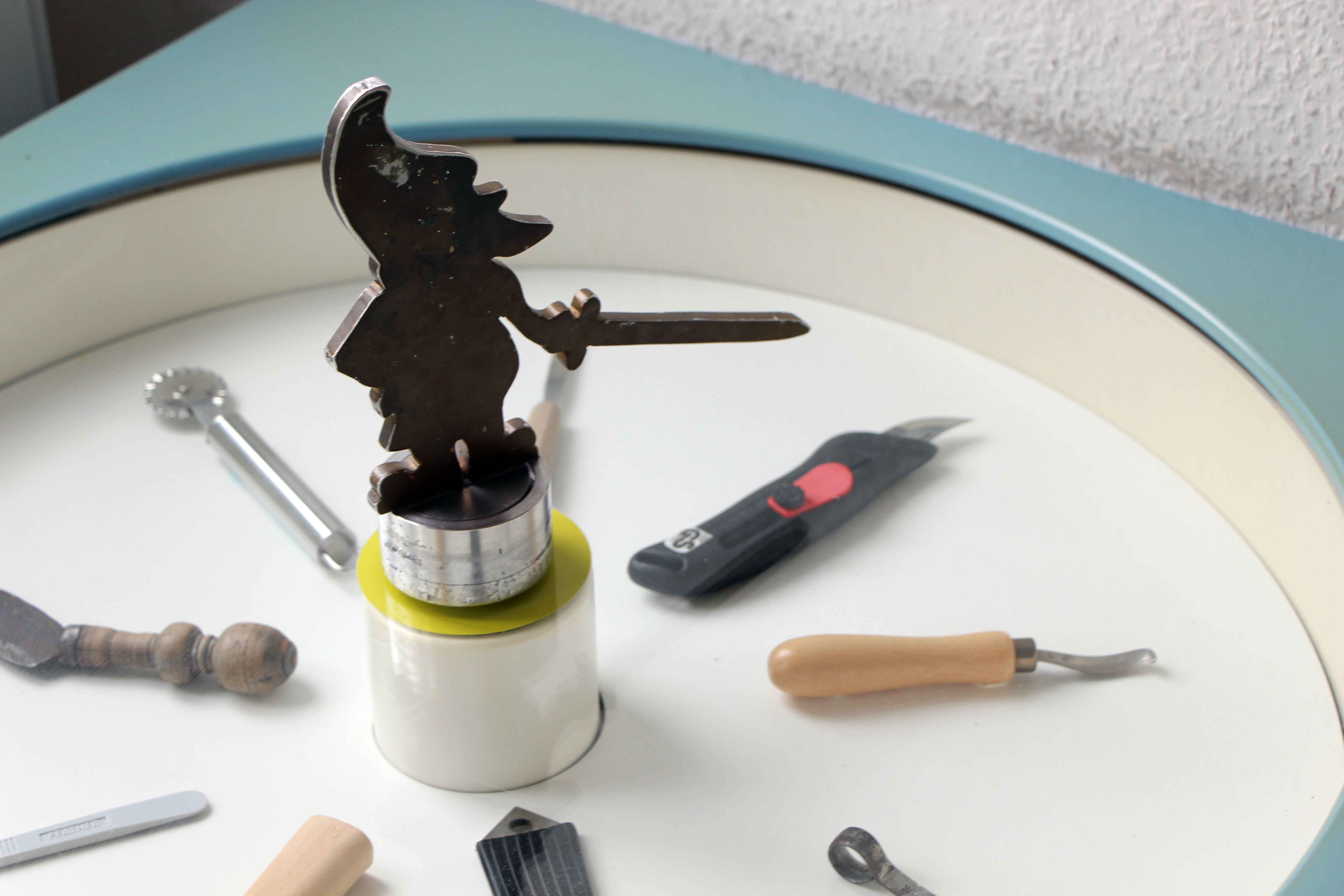
There were a couple of other games and activities – such as some spinning blocks that you could turn and find out how people around the world eat their food – and also a little booklet for children with questions, activities and interesting facts, which you could pick up at the ticket desk in the main building for a few Euros.
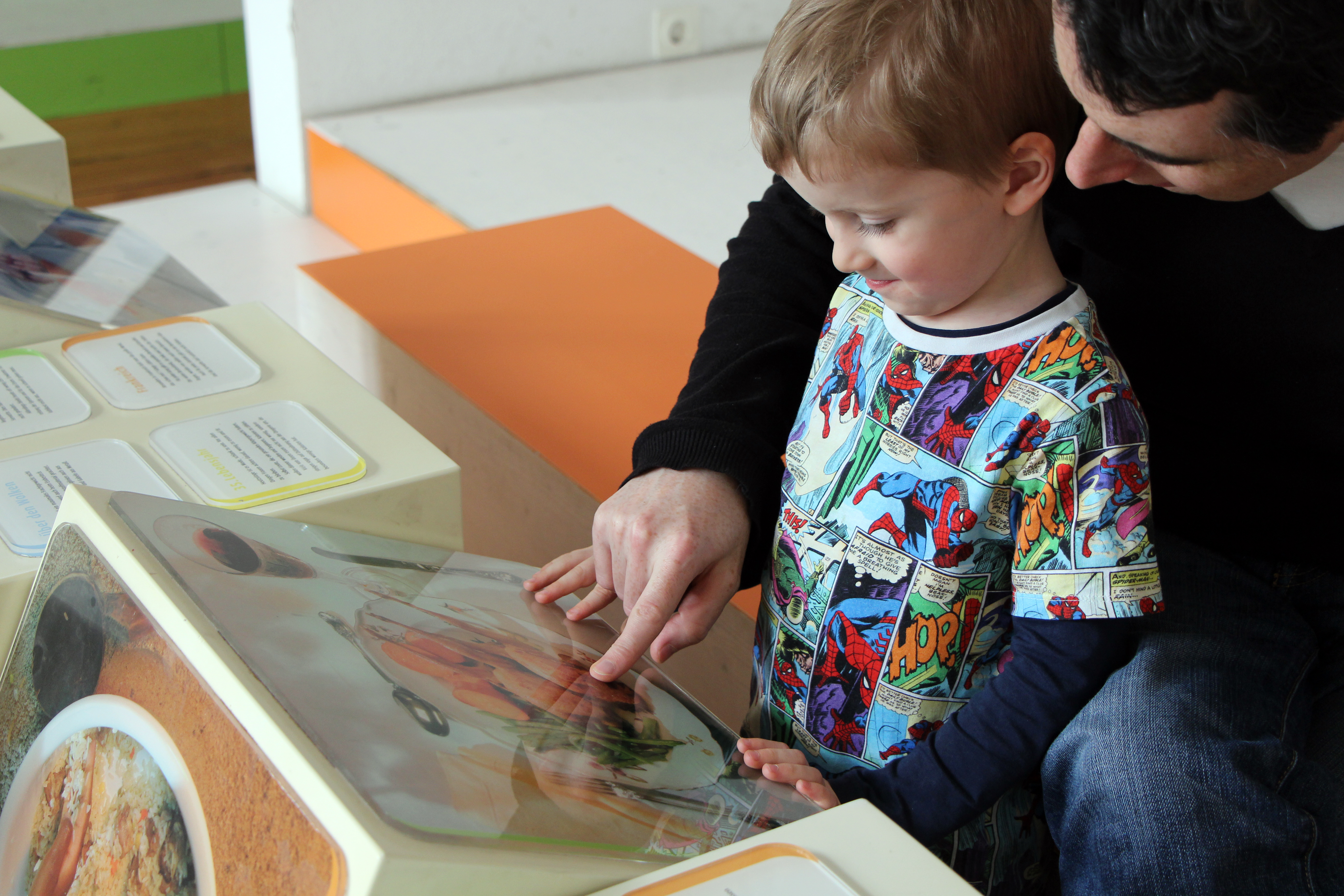
As much as we loved the children’s gallery, I really wish that instead of having all these activities together in one room in a separate building, they had integrated them in to the exhibits in the main part. How great would it be to have those audio stations of blades in action next to the actual blades in the collection. Or the feely boxes with things that can be cut, next to the display cases of the blades that cut them. Or the spinning wheels with meals from around the world, next to the relevant cutlery exhibits. It would be a perfect tool (no pun intended this time) for getting kids and families to engage more with the actual collections, and feel it’s a missed opportunity segregating it.
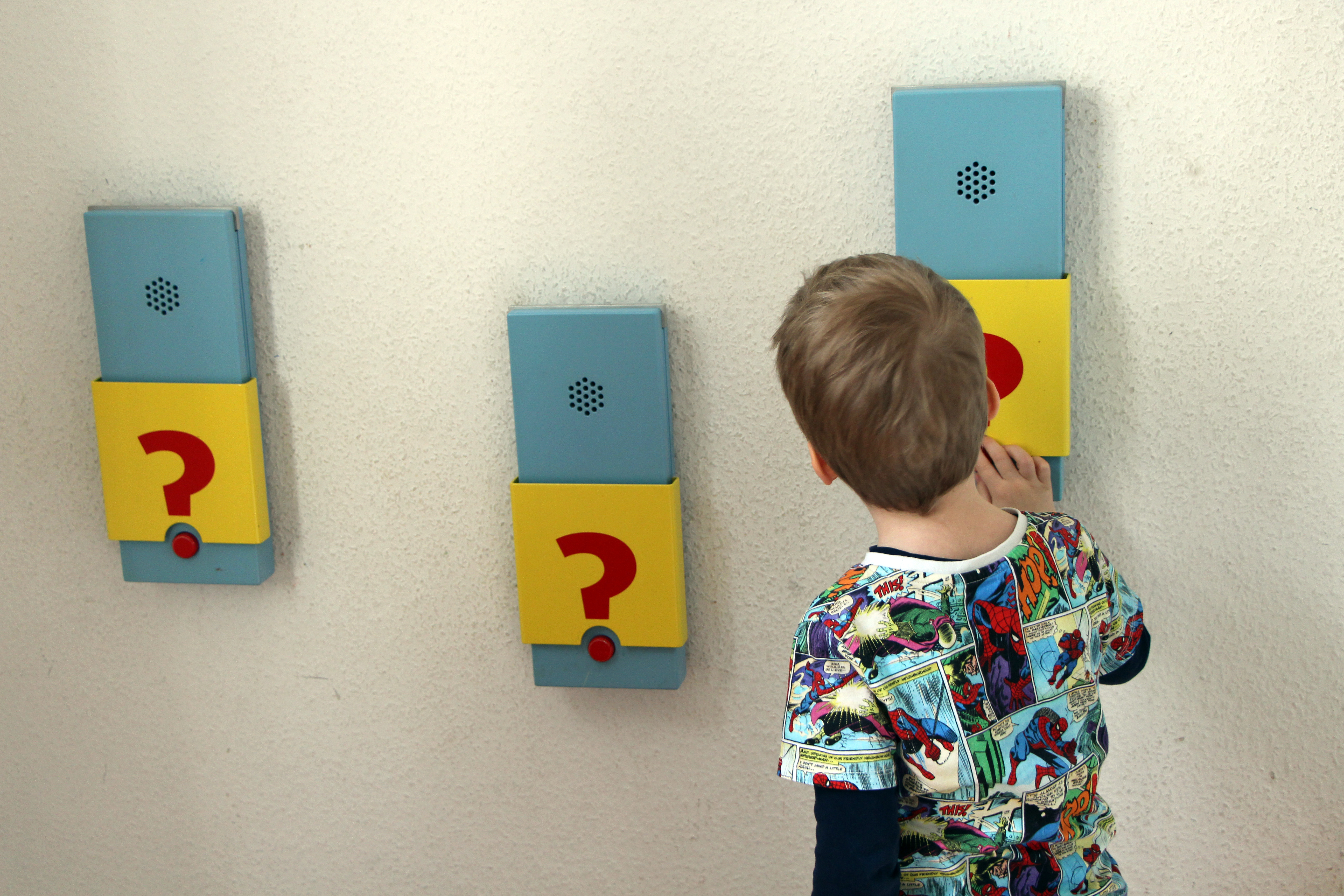
Nevertheless, it’s great that the children’s gallery exists, and we all had a great time there. If you plan on visiting the Deutsches Klingenmuseum, I’d definitely recommend going to the see exhibitions in the main building first though, as once you are in the children’s gallery, you’ll never get your kids to leave! Oh, and don’t miss the peacock sculpture in the main exhibition, crafted out of hundreds of scissors! It is truly amazing.
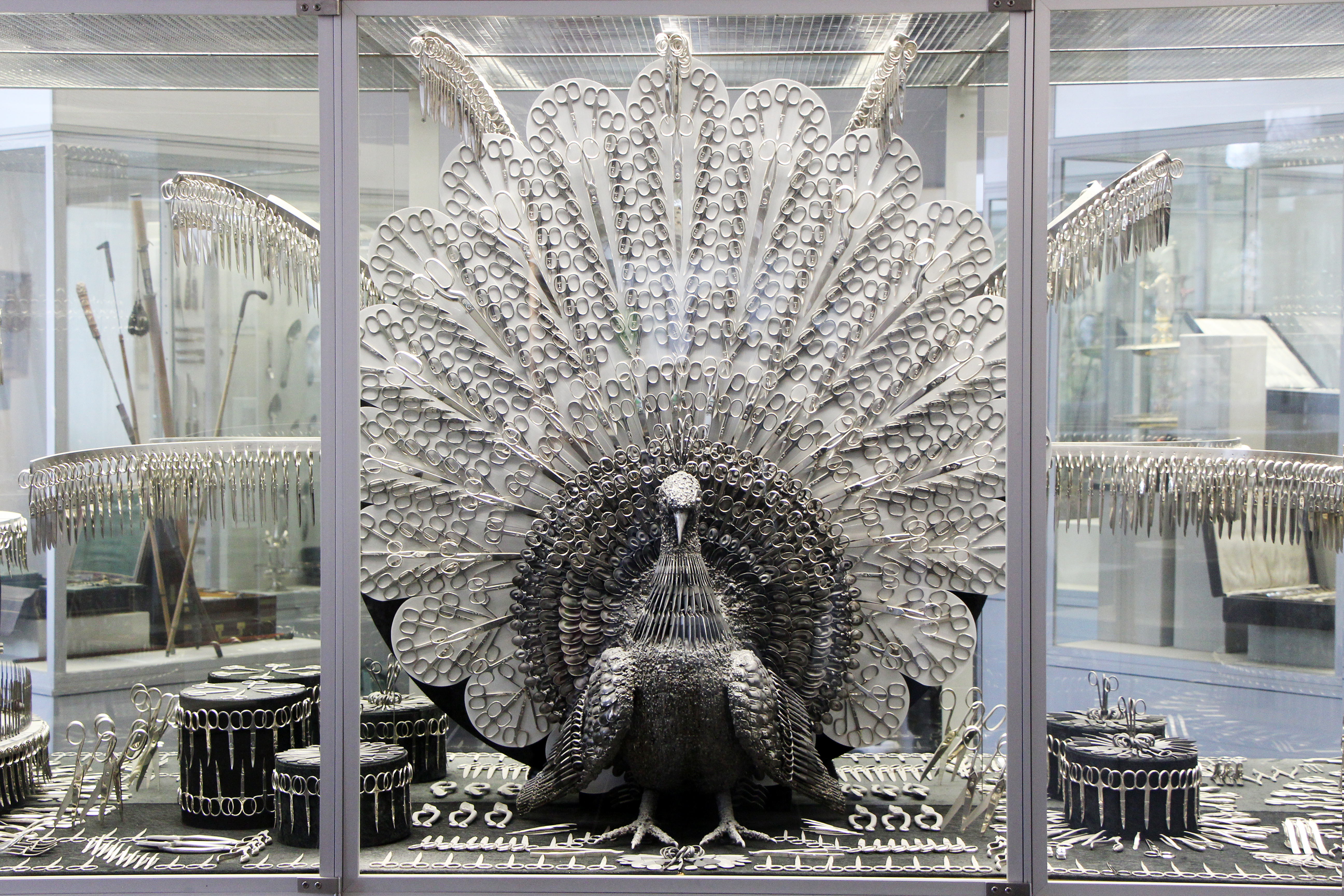
You can find the up-to-date opening times and admission prices on the museum website, along with directions of how to get there.
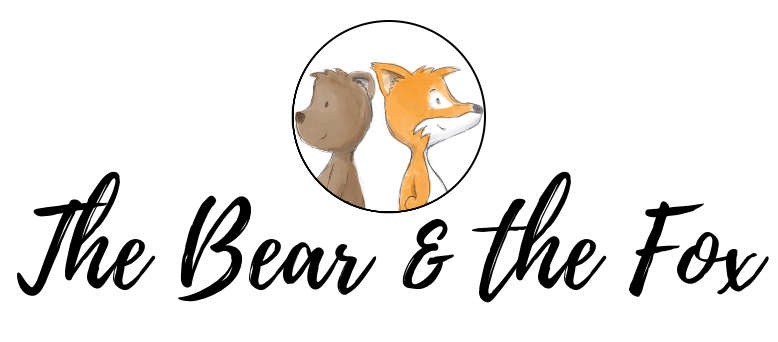



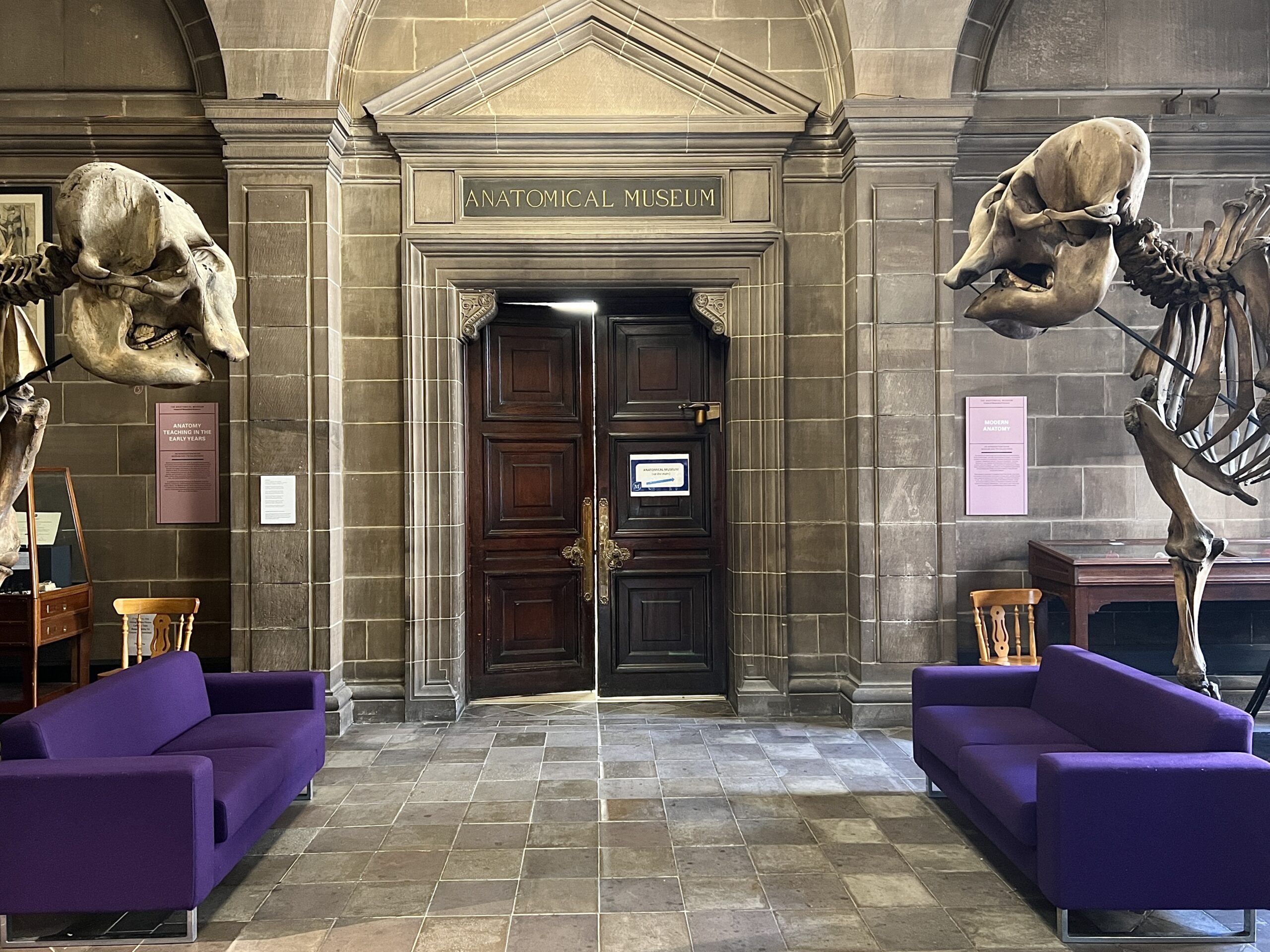
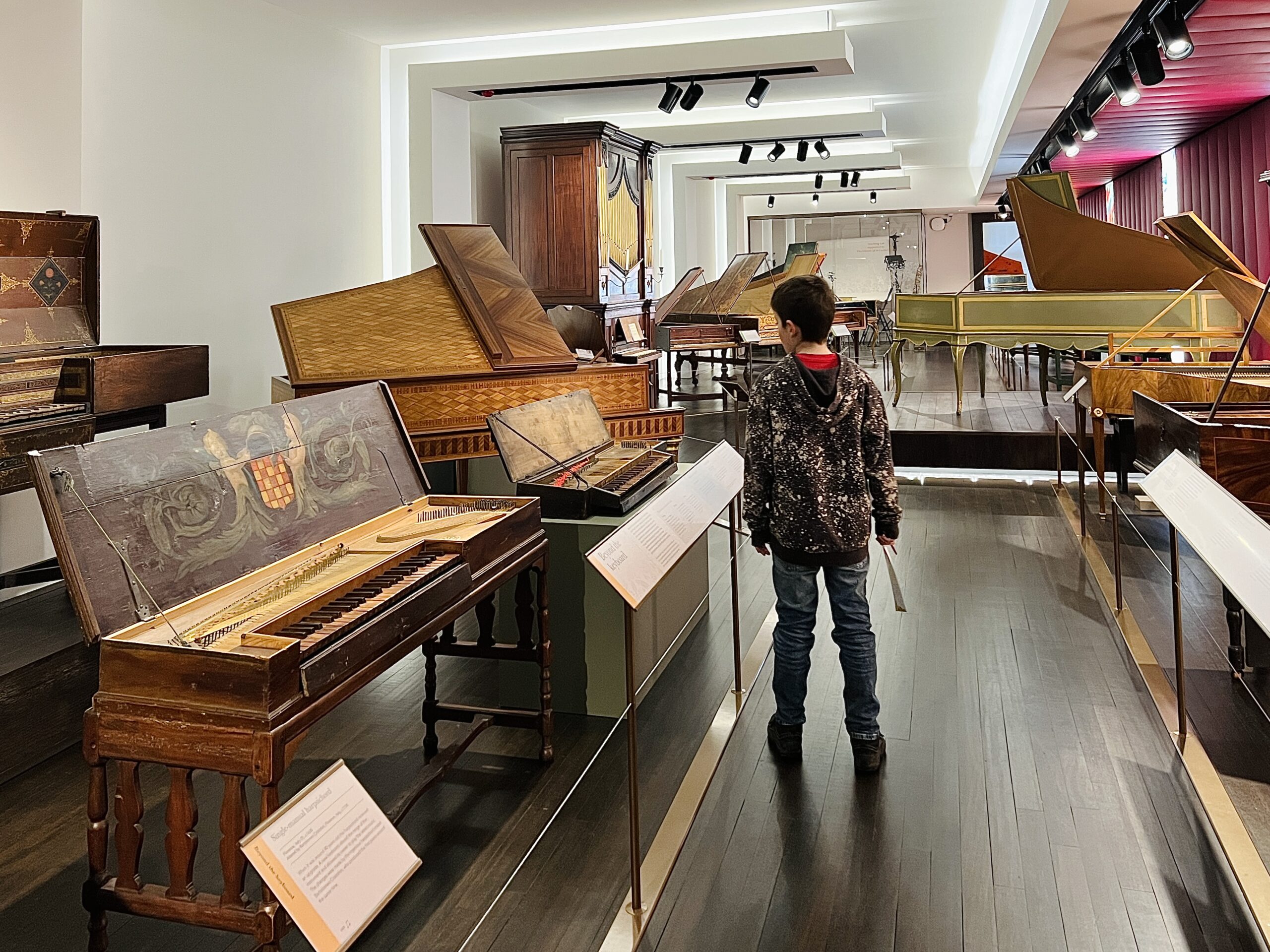
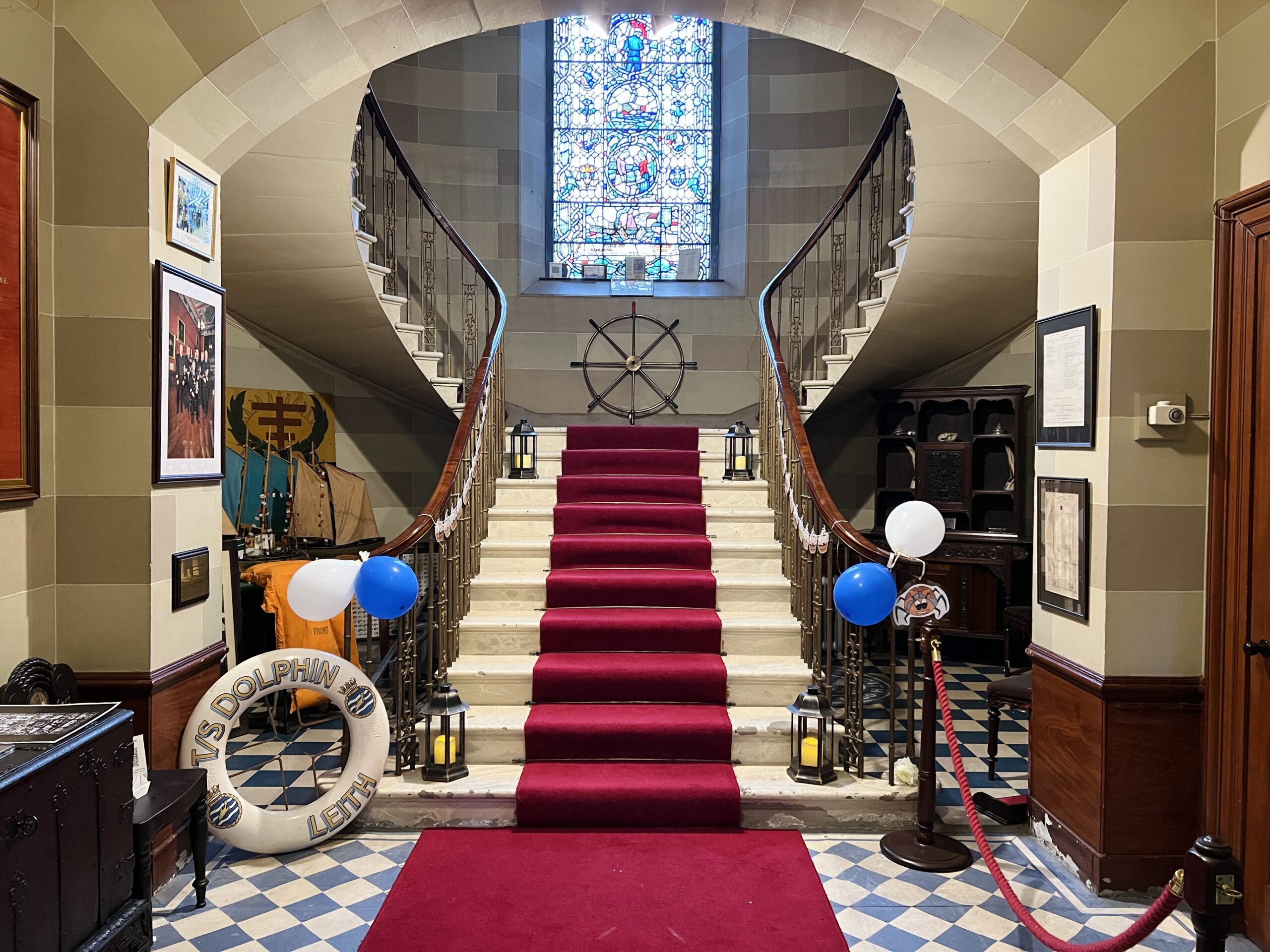
Jon
Crikey what a place! I would have loved going to something like this as a kid. Seems there is a heck of a lot of interaction as well!
Kara Guppy
I love that this is a hands on museum, I find the kids learn more when they get to touch and explore
Kizzy
I’m sure my eldest would love to visit this museum. It sounds fascinating and I would also love to see that peacock sculpture in real life too
Charlotte - Mama Makes Do
That looks like something a bit different to your normal museum! Like the look of the kids section though (relieved there’s no hands-on knives time)
Marie
This actually looks really interesting, I like how they made the first rooms so children friendly with touch boxes etc. Looks like you had a good day!
Lyndsey O'Halloran
I’ve not seen a museum like this before. It looks really interesting.
Sab
My husband would love this, he collects swords and knives, and he loves watching how they are made.
Melanie williams
This looks like a very interesting museum. My partner would love this place and I am sure spend hours there xx
Wendy
I was thinking my boys would be bored here until I read about the smaller children’s museum and it sounds great for kids! So much to learn and lots of activities, my boys would love it xx